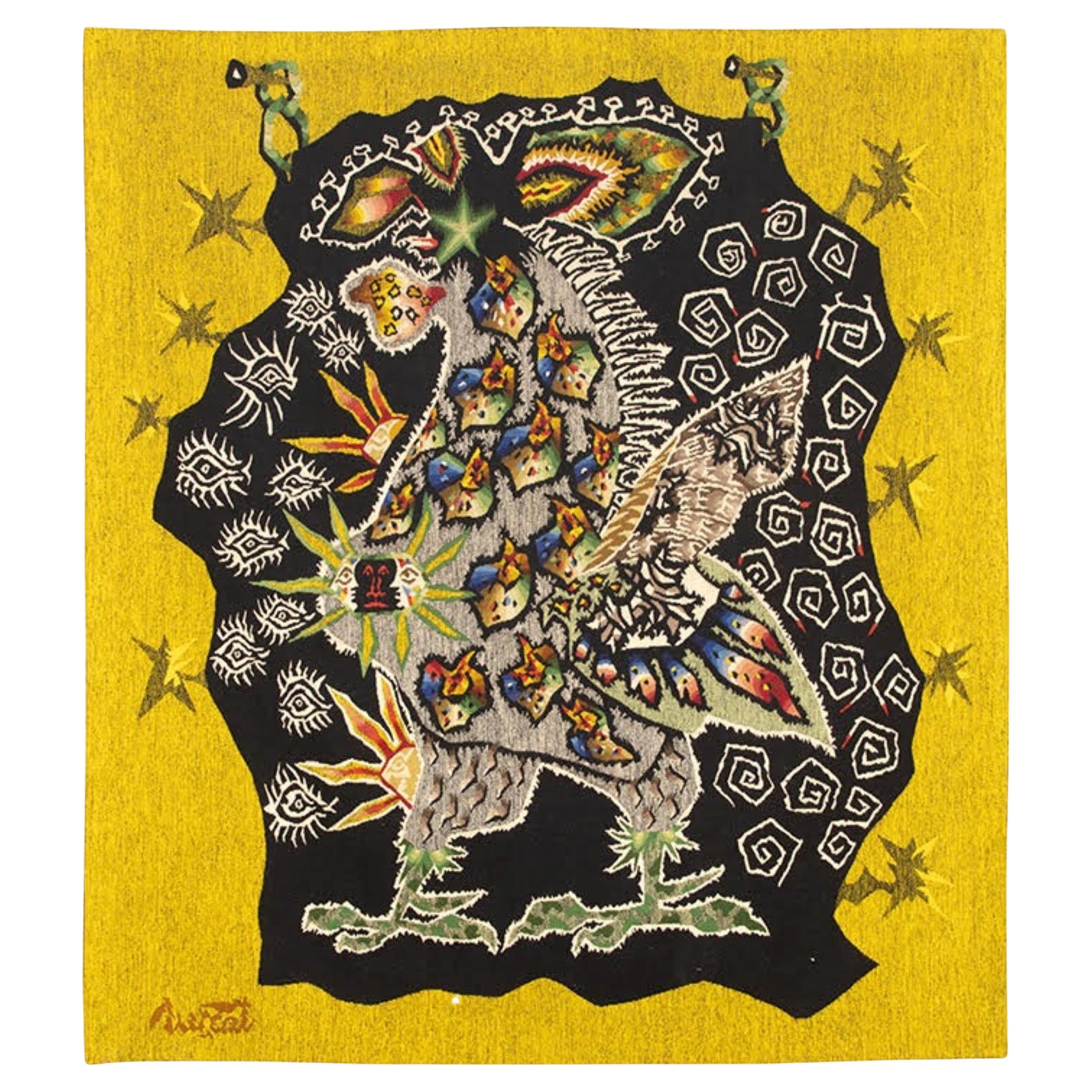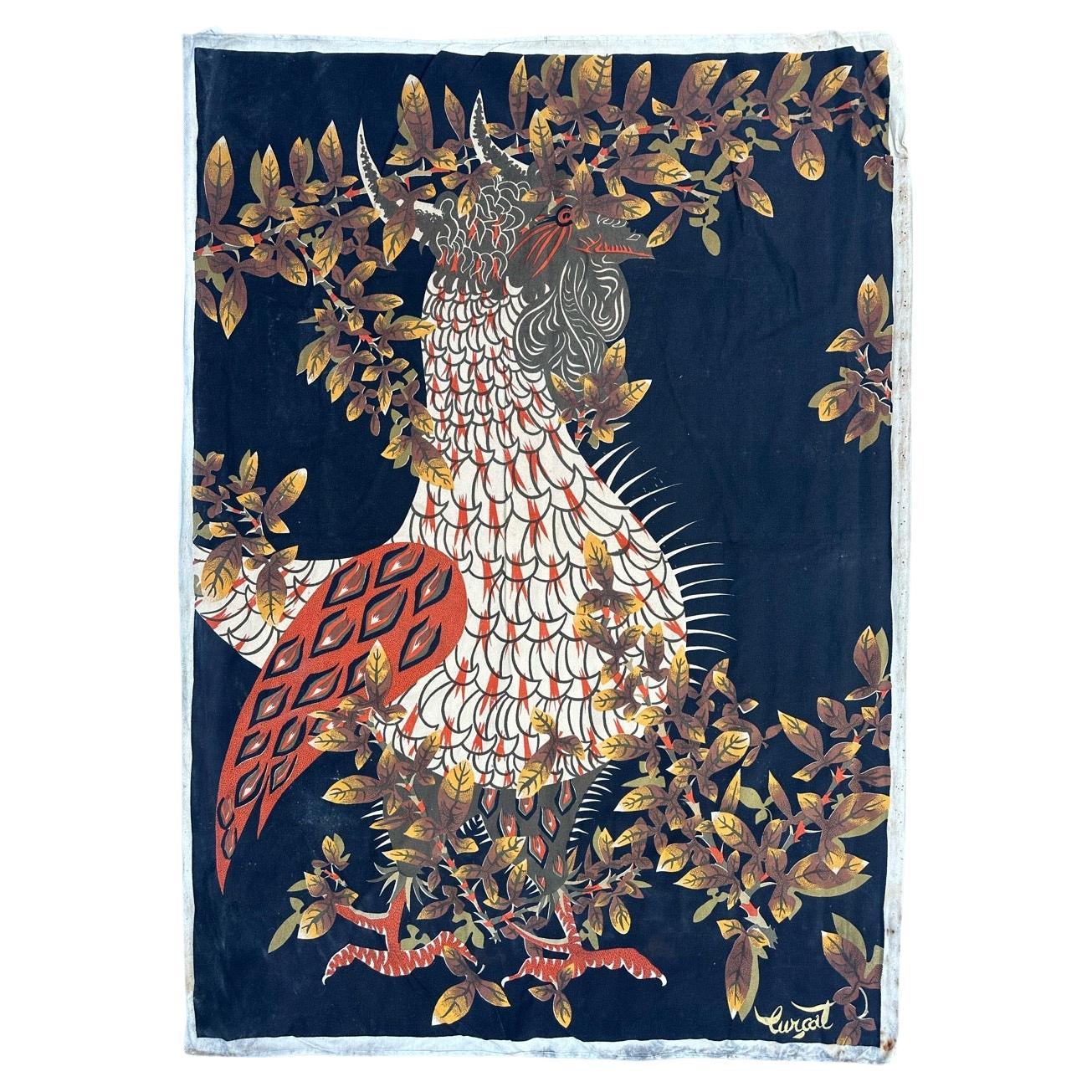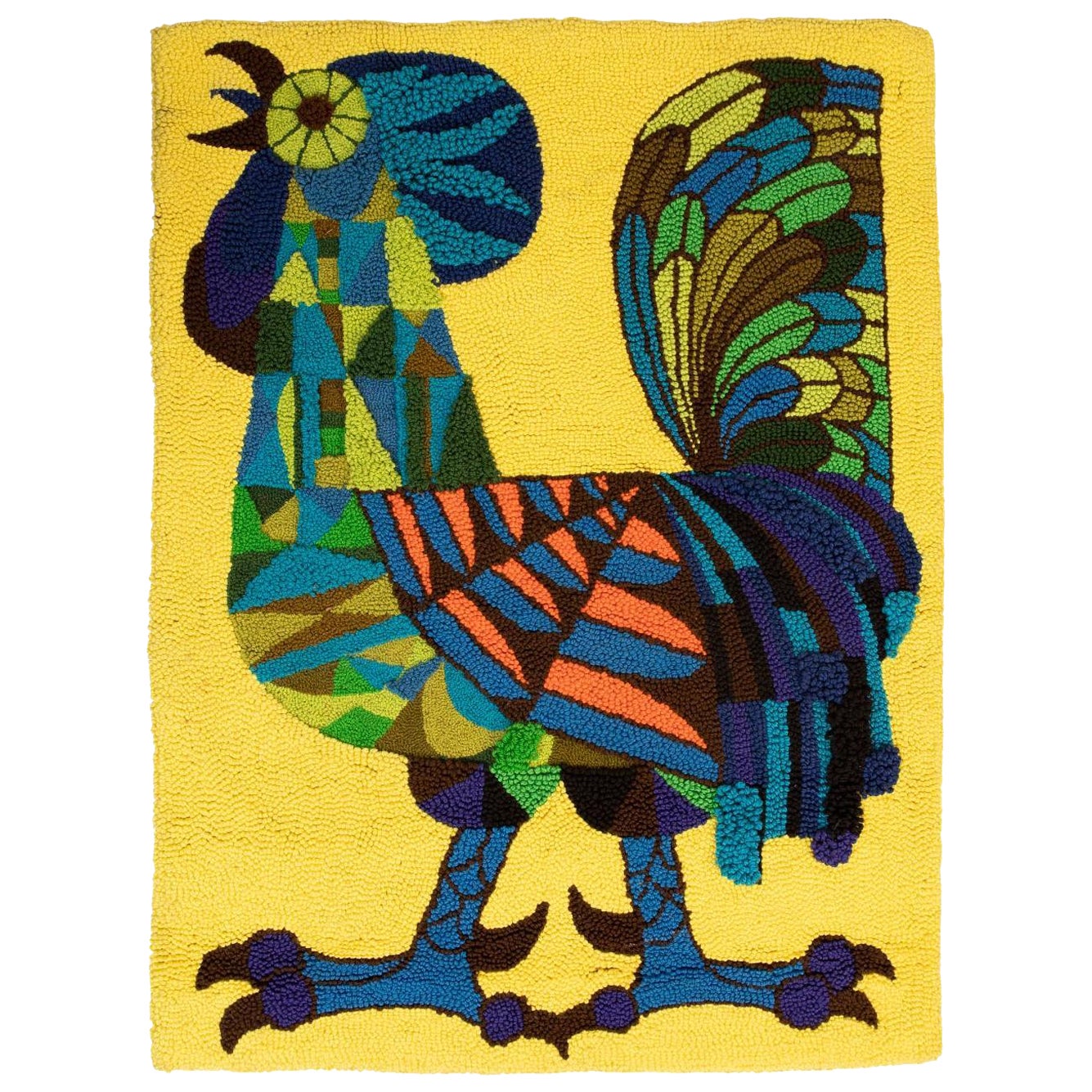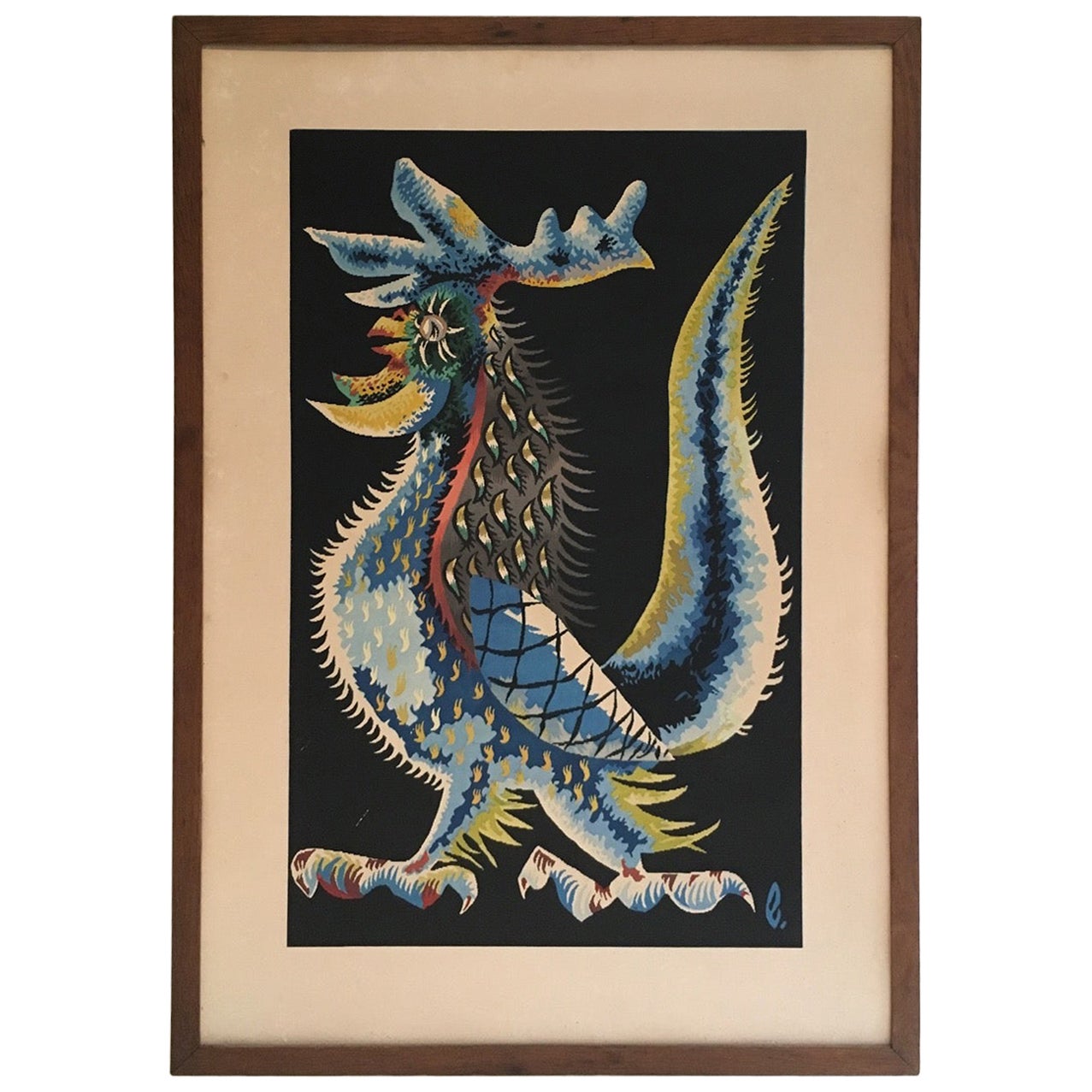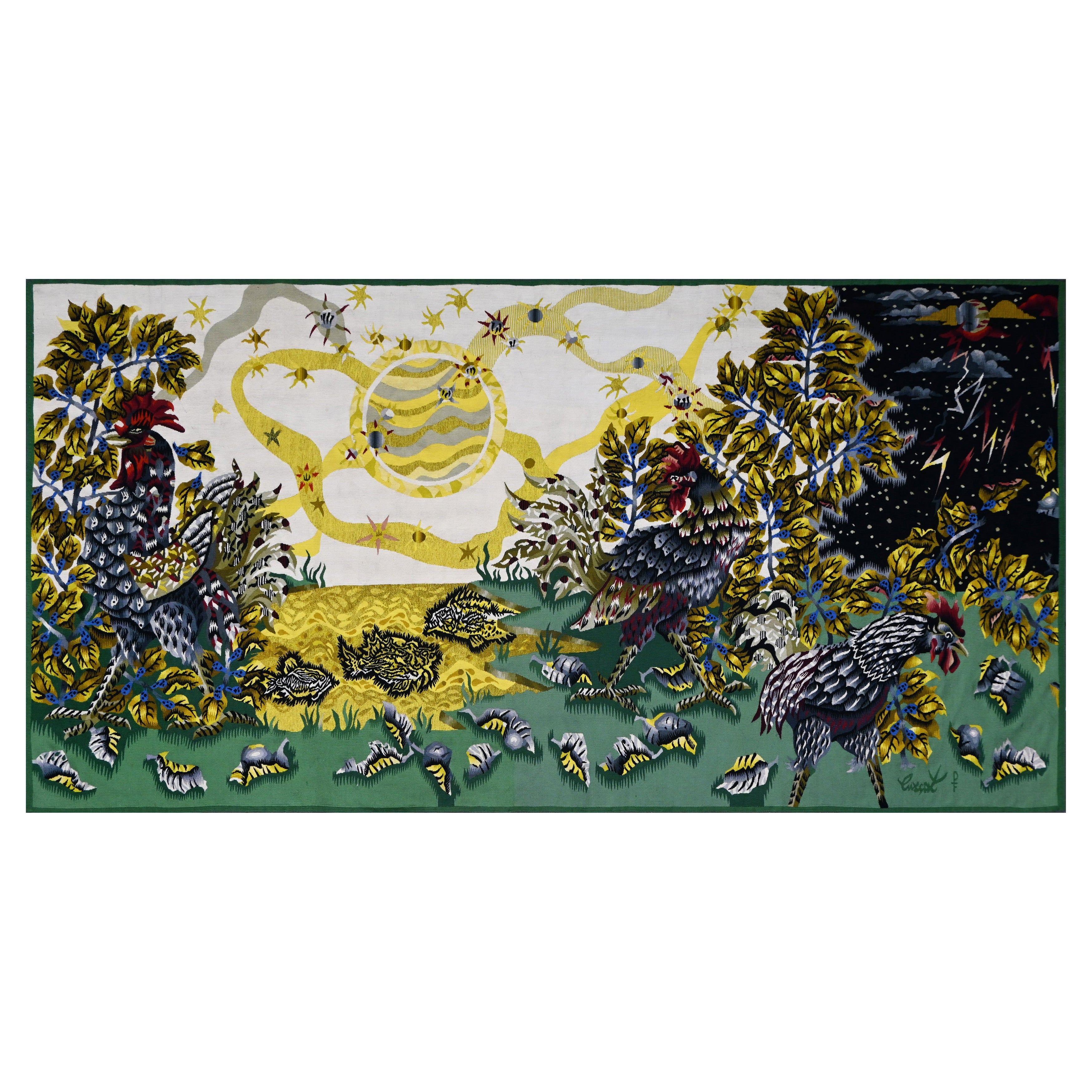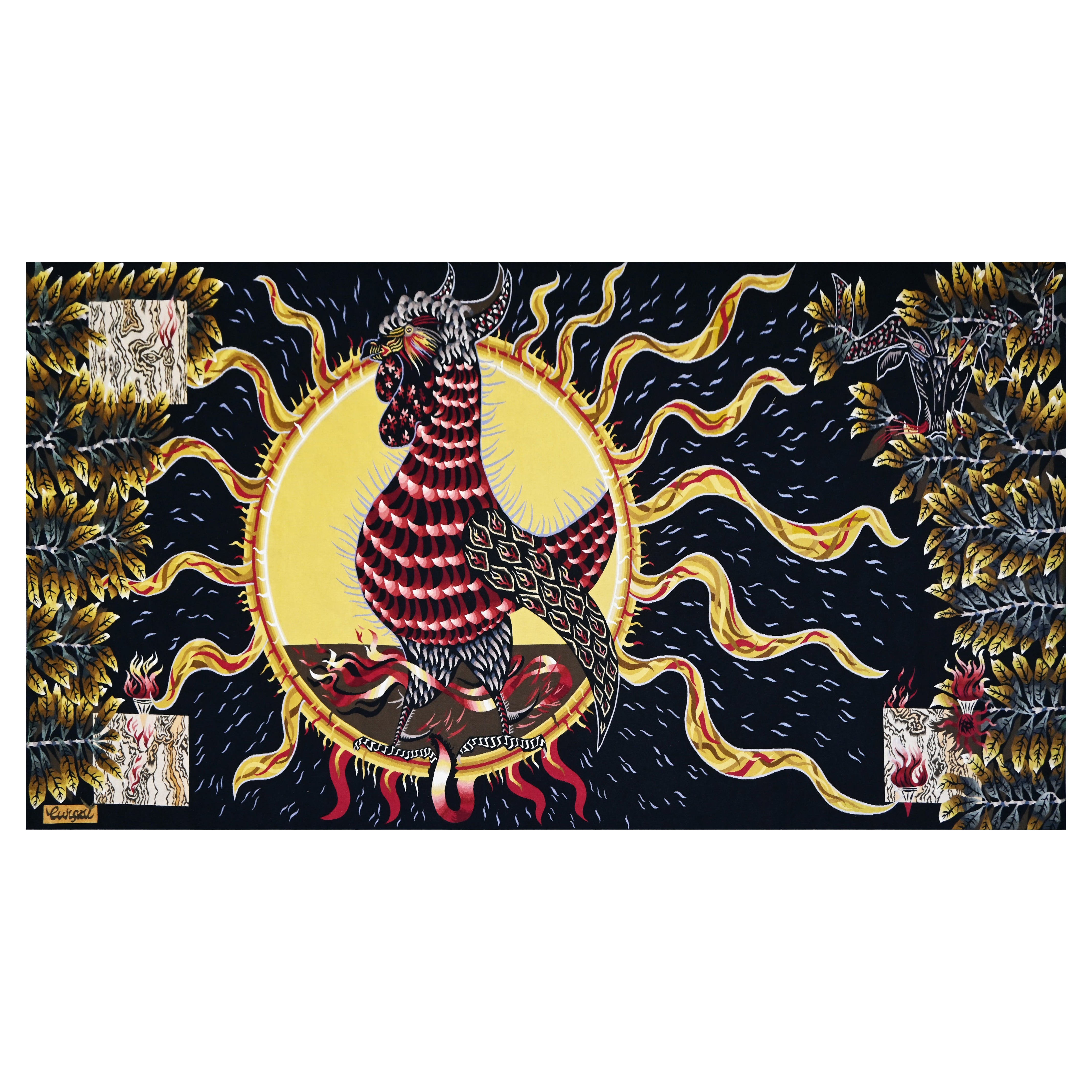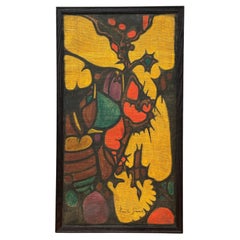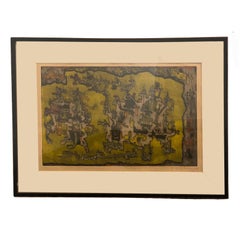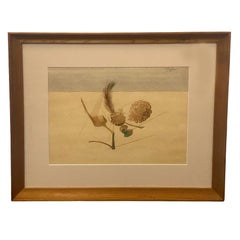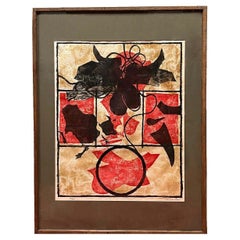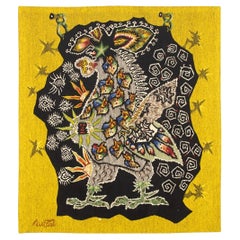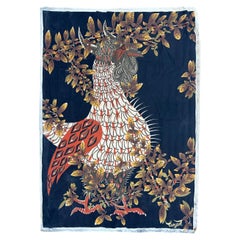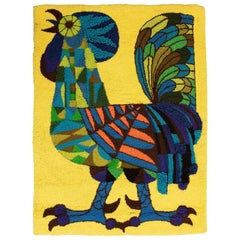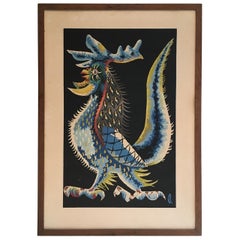Items Similar to "The Fishing Rooster" Tapestry by Jean Lurçat
Want more images or videos?
Request additional images or videos from the seller
1 of 11
Jean Lurçat "The Fishing Rooster" Tapestry by Jean Lurçat1950
1950
$2,500
£1,879.83
€2,173.66
CA$3,528.19
A$3,828.26
CHF 2,030.82
MX$47,010.78
NOK 25,114.68
SEK 23,783.57
DKK 16,225.47
About the Item
Jean Lurçat ( 1892–1966) was a French artist noted for his role in the revival of contemporary tapestry. He was also a painter and ceramist.
Biography
He was born in Bruyères, Vosges, France. After completing his secondary education in Épinal, he enrolled at La Faculté des sciences de Nancy to study medicine. He went to Switzerland and Germany (Munich) and in leaving his educational path, he went to the workshop of Victor Prouvé, the head of the École de Nancy.
Painting and the War
In 1912, Jean Lurçat moved to Paris with his brother, André. He enrolled at the Académie Colarossi, then at the workshop of the engraver Bernard Naudin. He met painters such as Matisse, Cézanne, and Renoir.
In 1917, Jean Lurçat made his first tapestries: Filles Vertes (Green Girls) and Soirée dans Grenade (Evening in Grenada). His second exhibition took place in Zürich in the same year. In 1920, he traveled extensively to Berlin, Munich, Rome, and Naples. Then he took up residence in Paris with Marthe Hennebert. It was she who wove two tapestries: Pêcheur (Fisherman) and Piscine (Swimming pool). He unveiled in the same year, at Le Salon des Indépendants, two tapestries and four paintings.
In 1921, Jean Lurçat met Louis Marcoussis and discovered Picasso and Max Jacob.
He created decorations and costumes for Le spectacle de la Compagnie Pitoeff. The following year, he made his fifth tapestry, Le Cirque (the circus). His first personal exhibition took place in Paris in April and September. He made a large decoration on a wall (no longer visible today) at the Castle of Villeflix. Then he went to Berlin, where he met Ferruccio Busoni.
During the next two years, Lurçat resumed travelling. In 1923 he went to Spain; in 1924 he went to North Africa, the Sahara, Greece and Asia Minor. He devoted a portion of the year 1924 to the making of his sixth tapestry, Les arbres (The trees). On 15 December, Lurçat married Marthe Hennebert and traveled to Scotland in 1925, then to Spain and northern Africa. Upon his return, he took up residence at La Villa Seurat. He participated in several expositions with Raoul Dufy, Marcoussis, Laglenne, and others. He revealed, at the home of Jeanne Bucher, elements of decoration (carpets and paintings) of Le Vertige, a film by Marcel L'Herbier. In 1926, he exhibited in Paris and Brussels and participated in collective exhibitions in Vienna, Paris, and Antwerp. His fame began with several articles written about him.
Years of glory
With the company of Marthe, he departed in 1927 for the Orient and spent the summer in Greece and Turkey. He decorated the lounge of the David-Weill family. There are four tapestries in the development and implementation of L'Orage (The Storm), for Georges Salles (Musée National d'Art Moderne, National Museum of Modern Art). He returned to Greece and Italy (Rome) in 1928 before embarking in October for the United States of America, for his first exhibition in New York. He spent 1929 in Marco. In 1930 he had exhibitions in Paris, London, New York, and Chicago; he created nine drypoint illustrations for Les Limbes (The limbo) by Charles-Albert Cingria; and he made another visit to America. He wrote several articles about painting and reduced his production of pictures.
In December 1932, Lurçat participated in the exhibition Sélections, alongside Matisse, Picasso, Braque, Derain, and Raoul Dufy, which was organized in New York by the Valentine Gallery. Being aligned with the far left, he often blended his political opinions with his art from then on. In 1933, he was living in New York. He created the decoration and the costumes for the Jardin Public (Public Garden), a ballet by Leonid Massine. 1933 also saw his first tapestry sewn at Aubusson, following the new and revolutionary technique that he developed.
Lurçat and the revival of French tapestry
To fully appreciate and understand the works of Jean Lurçat, one must view them in the context of the history of tapestry, particularly the decline of its existence during the Renaissance. It was during this time that tapestry was somewhat reinvented, with traditional techniques being reevaluated in the context of likening tapestry to paintings by artists such as Raphael. Jean Lurçat is mainly responsible for its revival in the 20th century when he redefined the importance of designing tapestry in a way that embraced the integrity of authentic tapestry from the Middle Ages, inspiring artists like Picasso to acquire the skills to design for tapestry.[1]
Expositions in the USSR
In 1934, Lurçat returned to New York, where he participated in the creation of new decorations and costumes for a choreography by Balanchine, which he unveiled in Chicago and Philadelphia. Then he returned to Paris and Vevey for the summer. At the end of summer, he departed for Moscow, where he had an exhibition at the Musée Occidental (Western Museum), followed by one at the museum in Kiev. In 1935, he painted the Dynamiteros in Spain, drawing inspiration from the revolution and the Spanish Civil War. In Paris, he participated in the activities of the Association of Revolutionary Authors and Artists. Then, he followed, with Malraux and Aragon, the Journées d'Amité pour l'Union Soviétique (The Journeys of Friendship for the Soviet Union). In 1936, he exhibited in London and released his first tapestry, made at La Manufacture des Gobelins (The Gobelins Tapestry Manufactory, Paris), Les Illusions d'Icare (The Illusions of Icare).
Vision of the apocalypse
In 1936, Jean Lurçat was inspired when he saw the tapestry L'Apocalypse (The Apocalypse), which was woven in the 14th century. In 1938, Moisson was sewn. In 1939, he exhibited in New York and Paris. In September, he took up residence in Aubusson with Gromaire and Dubreuil to renovate the art of tapestry, which at the time had fallen to a low point. His innovative technique used a simplified palette and robust weaving at a broad point. During this period, he abandoned oil painting in favour of poster paints. The Musée National d'Art Moderne (National Museum of Modern Art) acquired Jardin des Coqs (Garden of Roosters) and L'Homme aux Coqs (The Man of the Roosters).
Legacy
Lurçat died on 6 January 1966 in Saint-Paul de Vence. During the 1980s, his widow Simone established the Musée Jean Lurçat de Saint-Laurent les Tours and the Musée Jean Lurçat et de la Tapisserie contemporaine. She bequeathed many of his works to posterity.[3]
About the Seller
5.0
Vetted Professional Seller
Every seller passes strict standards for authenticity and reliability
Established in 1999
1stDibs seller since 2017
78 sales on 1stDibs
Typical response time: 1 to 2 days
- ShippingRetrieving quote...Shipping from: Pasadena, CA
- Return Policy
Authenticity Guarantee
In the unlikely event there’s an issue with an item’s authenticity, contact us within 1 year for a full refund. DetailsMoney-Back Guarantee
If your item is not as described, is damaged in transit, or does not arrive, contact us within 7 days for a full refund. Details24-Hour Cancellation
You have a 24-hour grace period in which to reconsider your purchase, with no questions asked.Vetted Professional Sellers
Our world-class sellers must adhere to strict standards for service and quality, maintaining the integrity of our listings.Price-Match Guarantee
If you find that a seller listed the same item for a lower price elsewhere, we’ll match it.Trusted Global Delivery
Our best-in-class carrier network provides specialized shipping options worldwide, including custom delivery.More From This Seller
View AllColorful Abstract Gouache on Burlap by French Painter Emile Gerard
By Émile Gérard
Located in Pasadena, CA
At the core of this colorful gouache on burlap appears a simple composition with large areas of colors responding to the use of darker hues to establish the backdrop. These hues act ...
Category
Late 20th Century Abstract Expressionist Paintings
Materials
Gouache
$680 Sale Price
43% Off
"HUNTING SCENE II" Lithograph by Ynez Johnston
By Ynez Johnston
Located in Pasadena, CA
"Hunting Scene II," a lithograph by American artist Ynez Johnston created in 1964, is part of a series published by the International Graphic Arts Society (IGAS) in September 1965. L...
Category
1960s Modern Figurative Paintings
Materials
Paper
"Pinecones" Mid-Century Still-life by David Segel
By David Segel
Located in Pasadena, CA
A good still life composition aims to craft a captivating story around elements. Proper placement and lighting allow the viewer to appreciate its creation. David Segel constructs his...
Category
Mid-20th Century Post-War Still-life Paintings
Materials
Watercolor
"Metamorphosis of Zan Biell" by Keisuke Serizawa, Signed
By Keisuke Serizawa
Located in Pasadena, CA
An abstract Expressionist piece titled "Metamorphosis of Zan Biell"
Numbered "20/20", and signed by artist Keisuke Serizawa.
Woodcut on Rice Paper.
Designer, painter, illustrator, d...
Category
1970s Abstract Expressionist Abstract Prints
Materials
Wood, Paper
Whimsical Drawing By Michael Dormer
Located in Pasadena, CA
A whimsical, abstract drawing. Signed Michael Dormer, 1970.
Michael Dormer is a prolific Southern Californian artist. Highly influential in California s...
Category
1970s Abstract Expressionist Figurative Drawings and Watercolors
Materials
Wax Crayon, Paper
$240 Sale Price
25% Off
"The Eagle and the Breath of Souls" Lithograph by Goldie
Located in Pasadena, CA
An eagle, in full flight, hovers over a panel where faces and numbers align. Goldie’s signature embossing technique heightens the sense of a gradual detachment, as if the eagle belon...
Category
Mid-20th Century Animal Prints
Materials
Lithograph
You May Also Like
Jean Lurçat “the Rooster" - Aubusson Tapestry - French Modern Design
By Jean Lurçat
Located in New York, NY
- The Rooster (Le cocq) by Jean Lurçat (1892-1966)
- Atelier Pinton Frères (Aubusson)
- Signed by the artist
- 64 x 71 in, 163 x 180 cm
- Provenance: Collection privée
The tapestry...
Category
Vintage 1960s French Modern Tapestries
Materials
Wool
Nice Antique French Hand Printed Lurçat Signed Tapestry « Rooster »
Located in Saint Ouen, FR
Very beautiful antique french hand printed tapestry by renowned Cotto manufacturer with nice design of Jean Lurçat, titled « Coq » (Rooster) with a signature printed on the design of...
Category
Mid-20th Century French Art Deco Tapestries
Materials
Cotton
Rooster Tapestry in Style of Evelyn Ackerman
Located in Phoenix, AZ
Striking 1960s rooster tapestry with vibrant yellows, blues and greens. Reminiscent of Ackerman tapestries but unsigned.
Category
Vintage 1960s American Mid-Century Modern Tapestries
Materials
Wool
Rooster Printing, French Work Signed by Jean Lurçat. Circa 1970
By Jean Lurçat
Located in Marcq-en-Barœul, Hauts-de-France
This rooster printing is a work signed by French designer Jean Lurçat. Circa 1970.
Category
Antique 1770s French Mid-Century Modern Prints
Materials
Wood, Paper
The Roosters by Jean Lurçat – Aubusson Tapestry, Pinton Frères Workshop - N 1575
By Jean Lurçat, Pinton Freres
Located in Paris, FR
Very Important Modern Handwoven French Tapestry
The Roosters by Jean Lurçat – Aubusson, Pinton Frères Workshop
Period: 20th century
Condition: Excellent
Material: Wool
Width: 300 c...
Category
20th Century French Modern Tapestries
Materials
Wool
Circa 1960 Jean Lurçat Rooster And Sun French Aubusson Tapestry 20th Century
By Jean Lurçat, Aubusson Manufacture
Located in Paris, FR
Artist: Jean Lurçat
Period: 20th century
Style: 50's and 60's design
Condition: Perfect condition - Hand woven
Material: Wool
Width: 365cm
Height: 185cm
In keeping with tradition, t...
Category
20th Century French Modern Tapestries
Materials
Wool
